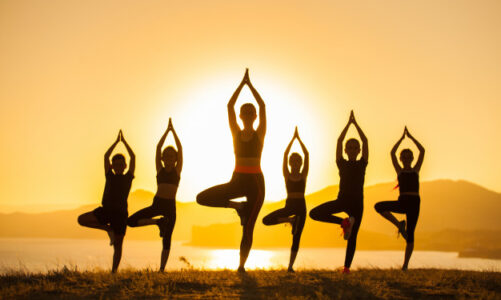If you regularly run or do fitness workouts, you may be interested in these 10 facts.
However, nothing is black or white but part of a whole where it is important to set a goal and be clear about what it is you want to achieve.
1.) You basically burn the same number of calories while walking, jogging or running a certain distance. A 10 mile walk burns just as many calories as you run the route because it takes longer to walk than to run.
2.) The faster you run, the higher your heart rate and the more calories you burn during the time you run. But if you run the same distance a little slower then you would still have burned the same number of calories, because then you keep on longer.
3.) The higher your heart rate while you run, the more calories you burn the time after you run.
So 10 kilometers of walking burns as many calories as 10 kilometers of running, but the hours afterwards you get an increased burn which increases your total calorie consumption.
4.) The number of calories burned does not say anything about how well you have trained your fitness, to find out how well you have exercised fitness you should look at what heart rate zones you have been in during the workout and link it to what you have for your goals with your fitness training.
5.) The better fitness you get, the better your body will be at burning fat, both when you exercise and when you rest.
6.) You become good at what you practice. This means that you should focus on your weaknesses at least once a week.
For ordinary exercisers who want to get better at running, it is important to train the trunk strength and to keep the technique in the running stage even when you get tired due to longer distances or that there is heavy terrain.
7.) If you want to be good at running far, you should focus on running far, but slowly, once a week.
Supplement with a quality workout speed in the form of intervals or back training every week, and a fast distance workout about 45 minutes each week.
8.) If your primary goal is to get as good fitness as possible, you don’t have to run.
You can choose any type of exercise where you are in a high heart rate zone for 20 minutes 3-5 times per week. Important to remember then, however, is that you cannot use the fitness you have built on any form of exercise because you will be good at what you exercise on.
Having a good fitness on a spinning bike does not automatically mean (with the exception) that you have equally good conditions on a regular basis. The local capacity; The processes that take place in the muscles and not in the heart and lungs limit you to how used you are to a certain type of exercise along with how effective your technique is.
9.) The harder you push yourself, the longer and more qualitative recovery you need.
All exercise breaks down the body, both physically in muscle cells and hormonally in the form of stress hormones. In order to get results from your fitness training you need to have a balance in degrading training phases and building rest periods.
What is exercise and rest is completely individual and is part of a holistic perspective where work, diet, sleep, social stress and so on play a big role.
10.) A heart rate watch on your arm not only needs to be a timer to measure how fast you are, also use it to get to know your body, know how different heart rate zones feel and how the heart rate fits with the track’s terrain and your speed.




